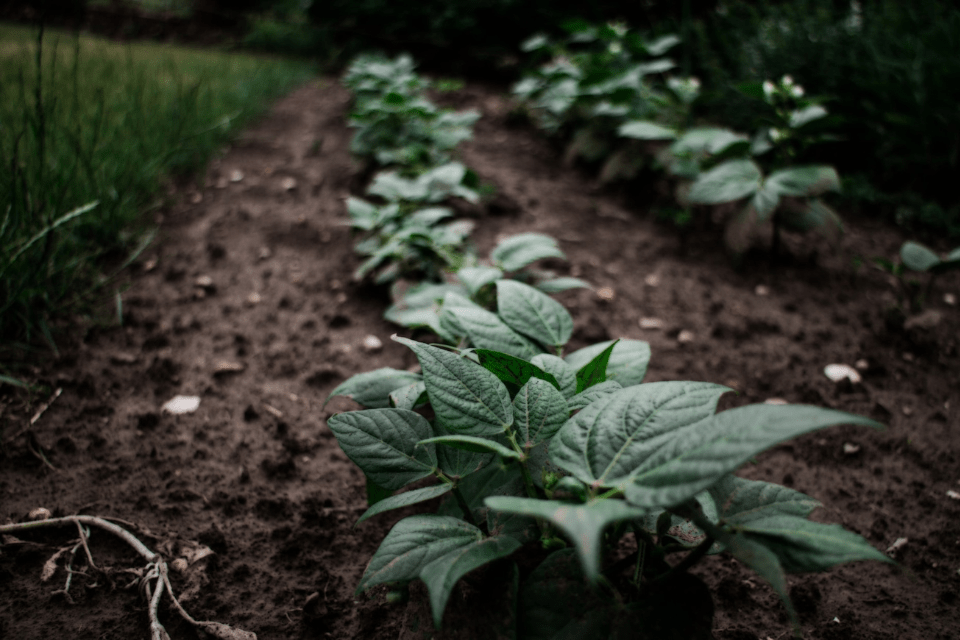For best results, potatoes need about four to six hours of sun per day. They also need well-drained soil that is high in organic matter.
Potatoes are a hearty crop that can tolerate a wide range of conditions, including partial shade. However, they will produce the most abundant harvests when grown in full sun. How much sun do potatoes need?
For optimal growth and yield potential, aim for at least six hours of direct sunlight per day.
How Much Sunlight Do Potatoes Need?
Can Potatoes Be Grown in the Shade?
While potatoes are typically grown in full sun, they can also be grown in partial shade. The amount of sun that potatoes need depends on the variety; some varieties require as little as four hours of direct sunlight per day, while others need up to eight hours. If you’re growing potatoes in an area that doesn’t get a lot of sun, make sure to choose a variety that is known to do well in shady conditions.
When it comes to potato plants, too much shade can be just as bad as too little. If your potato plants are getting more than eight hours of direct sunlight per day, they may start to produce small, misshapen potatoes. Too much shade can also lead to leggy plants that are susceptible to disease and pests.
If you live in an area with very hot summers, it’s best to provide some afternoon shade for your potato plants to prevent them from overheating. In general, potatoes prefer loose, well-drained soil with a pH between 5 and 7. If you’re growing potatoes in containers, make sure the pots have drainage holes so the roots don’t get waterlogged.
Potatoes need about one inch of water per week during the growing season; if rainfall is insufficient, you’ll need to supplement with irrigation. Be careful not to over-water your potato plants; too much water can cause the tubers to rot before they mature. If you want to grow healthy and productive potato plants, give them plenty of space to spread out their roots.
Each plant should have at least eight square feet of space all to itself; if you’re planting multiple rows of potatoes, leave three or four feet between each row so you can easily access the plants for harvesting later on.
Do Potatoes Grow Better in Sun Or Shade?
When it comes to growing potatoes, there are a few things to consider. One is whether you want to grow them in sun or shade. The other is the type of potato you want to grow.
Each has its own benefits and drawbacks. If you want to grow potatoes that are high in starch, then you’ll want to grow them in full sun. This will give the potatoes the most time to develop their starch content.
However, if you’re looking for a potato with more vitamin C, then growing them in partial shade may be a better option. This can help prevent the potato from developing too much sugar, which can make them less healthy overall. There are also different types of potatoes that do better in different conditions.
For example, waxy potatoes like red potatoes do better in partial shade because they don’t need as much sunlight to mature properly. On the other hand, starchy potatoes like Russets need full sun so they can develop their signature fluffy texture inside. In general, though, most potatoes will do fine whether they’re grown in sun or shade.
It’s really up to personal preference and what type of potato you’re looking for that will determine which is best for your needs.

What Month Do You Plant Potatoes?
Potatoes can be planted in the ground as soon as the soil can be worked in the spring. March is typically the month when potatoes can first be planted, but this will depend on your location and climate. If you plant potatoes too early, they may rot before they have a chance to sprout.
When choosing what type of potato to plant, consider whether you want a short season or long season variety. Short season varieties mature in about 60 days while long season varieties take up to 120 days to mature. There are also different types of potatoes suited for different uses such as baking, mashing, or frying.
Once you’ve selected your potato variety, order your seed potatoes from a reputable source. You’ll need about 2-3 pounds of seed potatoes for every 10 foot row you plan to plant. Cut each potato into 1-2 inch pieces making sure there are at least 2 eyes on each piece.
Plant the potato pieces 4-6 inches deep and 12 inches apart in fertile, well-drained soil with full sun exposure.
Do Potatoes Need a Lot of Water?
No, potatoes do not need a lot of water. They are a drought-tolerant crop and can actually be harmed by too much water. When potatoes are watered too often or too heavily, the roots will stay close to the surface where they’re more likely to be damaged by frost or pests.
Too much water can also encourage fungal diseases like blight. The best way to water potatoes is to give them a deep watering once a week, allowing the soil to dry out in between watering.
How Much Water Do Potatoes Need?
Water is an important part of the growing process for potatoes. They need about 1-2 inches of water per week, applied evenly throughout their growing season. Too much or too little water can both lead to problems with your potato crop.
If you live in an area with low rainfall, you will need to supplement natural precipitation with irrigation. Potatoes are typically grown from late spring through early fall, so make sure to keep an eye on rainfall amounts and factor in irrigation when necessary. Overwatering can cause potatoes to develop rot or mold, while underwatering will cause them to become dry and shriveled.
It’s important to find that happy medium when it comes to watering your potato crop!
How Long Do Potatoes Take to Grow?
If you’re looking to grow your own potatoes, you may be wondering how long they take to mature. The answer can vary depending on the type of potato and growing conditions, but generally, potatoes will be ready to harvest in about 2-3 months. Early varieties of potatoes can be harvested as soon as 60 days after planting, while late varieties may take up to 120 days.
If you live in an area with a shorter growing season, you can start your potatoes indoors in pots and then transplant them outdoors once the weather warms up. No matter what type of potato you’re growing or where you’re growing it, regular watering is crucial for a good crop. Be sure to keep the soil evenly moist (but not soggy) throughout the entire growing season.
Too much or too little water can both lead to problems with yields and quality. Once your potatoes are mature, carefully dig them up being careful not to damage the tubers. Cure them by letting them sit in a warm, dry place for a week or two before storing them in a cool location for use throughout the winter months.
How Much Space Do Potatoes Need to Grow?
Potatoes are a great crop to grow in the garden. They are relatively easy to care for and don’t require a lot of space. But just how much space do they need?
The answer may surprise you. Potatoes can actually be grown in quite small spaces. In fact, one potato plant only needs about 12 inches of space to thrive.
This means that you can easily grow potatoes in containers or even in raised beds. Of course, if you want to harvest a large number of potatoes, then you will need to allocate more space. But even then, you can get by with as little as 30 square feet per 10 plants.
So, don’t let a lack of space stop you from growing this delicious and versatile vegetable!
Conclusion
In general, potatoes need about 14 hours of sunlight each day to grow properly. They can tolerate some shade, but too much shade will result in smaller, less tasty tubers. If you live in an area with shorter days during the winter, you may need to supplement your potato plants with artificial light.
